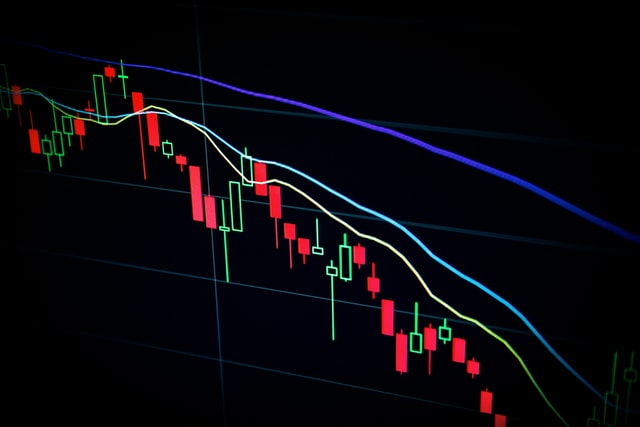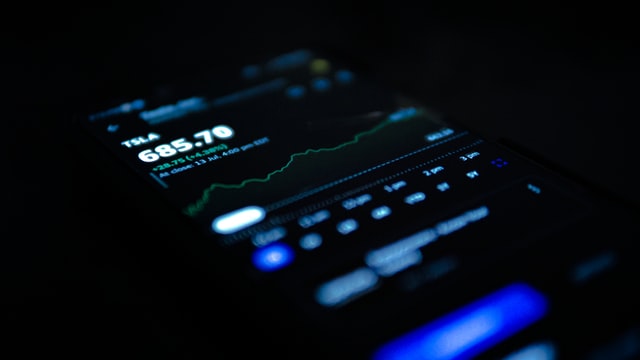
Cory Russell
Mar 31, 2022 11:57
We track the number of markets, asset classes, and global money movements at Technical Traders in search of insights that can aid us in our hunt for ETF gains. When we compare foreign exchange to the SPY (S&P; P 500), we can see that FX has likewise been in a risk-on environment for the previous two years.
We recently examined volatility using the CBOE Volatility Index, or VIX. However, some other methods or instruments can be used to examine asset prices.
The Flow of Money Around the World Has Been High-Risk.
The current spike in inflation in foreign exchange has paralleled that seen in energy, metals, food commodities, and real estate. The Australian, New Zealand, and Canadian dollars are commonly referred to as commodity currencies. Due to its global status as one of the significant oil and gas producers, the US dollar has benefited to some extent.
A currency like the Australian dollar will often see worldwide money inflows in a risk-on environment. On the other hand, in a risk-off climate, money flows out of risky currencies like the Australian dollar and into safe-haven currencies like the Swiss franc, Japanese yen, and the US dollar.
As global investors seek returns, money has recently been re-allocated to other assets. Capital inflows have also boosted the forex markets. Over the last two years, beginning with the Covid lows in March 2020, the SPY has gone from a -30 percent loss to a +50 percent gain in early January.

Interestingly, the AUDJPY (Australian dollar vs. Japanese yen) rose from -15 percent to more than +20 percent within the same timeframe, a total swing of 35 percent. However, how do we use this data to determine where we are in the market cycle right now? Let us go over this procedure together to discover what signs the FX market might offer to help us choose and trade ETFs.
Daily Chart of AUD/JPY vs. SPY
GBP/JPY Reacts to Upper Channel Resistance of 6 Years The GBPJPY (British pound vs. Japanese yen) tends to mimic the SPY. Therefore, we will conduct a quick breakdown of the GBPJPY.
The monthly chart below shows that the GBPJPY reacts well to its 72-month or 6-year upper and lower channels. The GBPJPY hit bottom in 2011 and has since risen to its 6-year lower channel.
The GBPJPY then formed a head and shoulders top formation over 12 months at the 6-year upper channel between 2015 and 2016. It is worth noting that the top's head was produced at the Fibonacci 161.8 percent of the GBPJPY all-time low, and the shoulders were made at the 166.6 percent of the GBPJPY all-time low.
The 2016 decrease lasted 17 months, and the 2017 rebound lasted 17 months. The 2019-20 dip lasted 26 months, and the 2020-21 rise has only taken 26 months to complete. Note that the indicator counts both the low and high months in its counts. The essential thing here is that the GBPJPY has been replicating its initial price wave recently.
The 2016 and 2017 lows were half of the GBPJPY's all-time high. However, the 2020 low was also in the 6-year lower channel.
After a 26-bar (month) surge, the GBPJPY is currently reacting to its 6-year upper channel.
It is vital to understand that the purpose of this post is to provide us with insights into some alternative research to challenge us to look for pricing indications. Time will tell whether this research is correct, but if the price continues to react at these levels, we should conclude that market psychology or trend is shifting.
GBP/JPY - Monthly Chart of the British Pound vs. the Japanese Yen
Learn how to use price as a trend indicator.
We track prices simply as technical traders, and once a new trend has been proven, we will adjust our positions accordingly. Our subscribers get access to our ETF trades. Last week, we opened five new trades, four of which have already reached their initial profit target levels and two of which have now been closed at a profit.
Our algorithms constantly monitor price movements in a wide range of markets, asset classes, and worldwide money flows. As our models generate new information regarding trends or changes in trends, we will quickly disseminate these signals to our subscribers and those on our trading newsletter email list.
It takes more than knowing when to purchase and sell to be a great trader. Money and risk management are crucial when it comes to becoming a consistently profitable trader. Correct position sizing and the use of stop-loss orders can help you protect your hard-earned investment cash. You are taking gains in stages by scaling out of positions. Moving stop-loss orders to breakeven when appropriate will help you improve your trading success while lowering your portfolio risk.
What are some strategies that can assist you in navigating current market trends?
Learn how we employ unique methods to identify strategic entry and exit locations for trades by understanding market cycles, set-ups, and price target levels in various sectors. We foresee colossal price swings in the US stock market and other asset classes worldwide over the next 12 to 24 months.
We believe the markets have entered a revaluation period as global traders strive to discover the following significant trends, away from the sustained central bank support rally. As traders and investors seek safe havens in Metals and other safe havens, precious metals will likely begin to operate as a proper hedge.

Mar 31, 2022 11:34

Apr 01, 2022 11:16